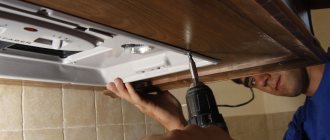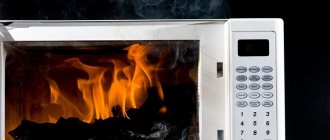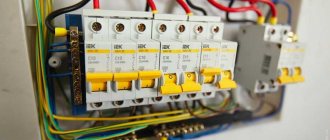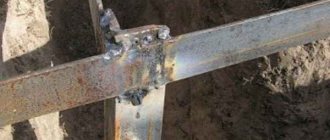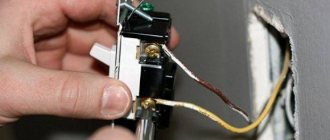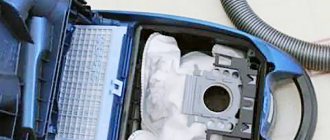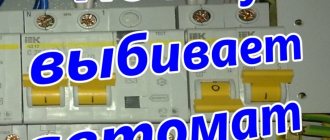What to do if the vacuum cleaner does not suck? We are looking for the cause of the breakdown
In the lion's share of cases, problems are fixable. Five problems and solutions in the table:
| Cause | What to do |
| Filled bag | Clean reusable, change disposable |
| Clogged filter | Clean it or change it |
| Damage to the device | Change what's broken |
| Blockages in the hose, brushes or tube | Check the draft without the “suspected” part. If the device is working at full capacity without it, check for damage and remove any blockages. |
| Broken motor or battery | Contact repairmen |
The vacuum cleaner does not pull well for one of these reasons. The help of specialists may be needed only in case of engine failures. In other cases, a few free minutes and accuracy while working are enough.
The right choice: Which vacuum cleaner is better - wired or wireless: 3 points to “think about”
If the vacuum cleaner does not suck up dust
The reasons for poor absorption of debris and dust may be the same as for overheating. To identify the problem, you should perform the following steps step by step:
- First, be sure to disconnect the device from the network;
- Next, a general inspection of the device is carried out;
- It is worth making sure that the selected mode is correct - perhaps the parameters are simply wrong;
- If all this does not help, then you should disassemble the unit: disconnect the pipe and brushes, then remove the body and inspect the insides (dust bag or container, filters, engine).
If a malfunction is detected, you should begin to eliminate it.
The bag is overflowing
A common reason for weak vacuum cleaner traction can be an overfilled dust and debris bag: some older models do not have a fullness indicator, so you should regularly check the bag's fullness level yourself. When the dust container is 70% full, the suction power may decrease significantly or disappear altogether.
During the emptying process, it is necessary to examine the material from which the bag is made:
- paper bags are disposable, so they can only be replaced with a new one;
- fabric bags can be washed in plain water and put back in place after drying.
If everything is in order with the dust collector, but the draft still does not appear, then you can proceed to the next stage.
The filter is clogged
If the vacuum cleaner does not suck, it may be due to the filters. Any model contains 2 filters, one of which is used for fine cleaning, and the second is exhaust. If the exhaust filter has never been replaced, it should be done now; it should be changed every 50 hours of operation. The fine filter should be cleaned or changed regularly: you can wash it with warm water and then dry it thoroughly. Filters are usually located near the back of the device.
Dirt in the hose or brush
A drop in suction power sometimes occurs due to a damaged hose or nozzle. First, you should carefully inspect the suction pipe and inspect the place where it is connected to the body - the pipe may not be fully seated or not fit tightly. If there are blockages in the pipe, it is necessary to clear them with wire. Next, you need to check the hose for damage: to do this, you can disconnect it from the device and put your hand on the inlet. If the traction is good, then the reason lies in the hose.
You should also study the nozzle; sometimes it can cause poor performance of the device. It is necessary to clean the brushes from threads, hair and other debris, and also check for permeability inside. The bearings should also be checked for proper operation, because the force of the air flow depends on them.
Damage to the device
To gain access to the main part of the vacuum cleaner, remove the housing protection. Usually this unit stops functioning due to a blown fuse - you can check it with a multimeter. If the fuse is faulty, select one with similar parameters and install it in place. If the contact is broken, this can also cause a malfunction; solder the damaged contact in place with a soldering iron. If there is a suspicion that the motor brushes are malfunctioning, then you should work extremely carefully; an incorrect connection can lead to the device starting to work in the other direction and simply blowing out dust. If the winding on the coil breaks, you should prepare to replace the unit or buy a new vacuum cleaner.
Each model has its own weaknesses. In LG models, graphite brushes begin to become unusable after prolonged use, and in Samsung devices, sometimes there are winding insulation failures, which ultimately leads to an interturn short circuit.
Important! A faulty engine is practically impossible to repair on your own and will require the help of competent specialists to restore it.
Full dust bin
Often the vacuum cleaner does not pull at full power due to the dust container being filled to the top. Problems begin as soon as the garbage takes up more than 2/3 of the bag's capacity. Waiting is the same as death. It is necessary to solve the problem as soon as the device begins to “weaken.” This can be done using one of the methods below.
1. Replace the dust collector with a new one. Option for paper collectors, like the Karcher WD 3 P. This one is designed for one-time use.
2. Clean the bag thoroughly. If the device has fabric dust collectors like the Samsung VC07M25H0WB/UK, they can be used 2-4 times. To do this, you need to carefully shake out the garbage, rinse the collection under running water and let it dry.
However, fabric bags do not last forever and wear out over time. On average, they are enough for 3-4 washes, and then the quality of cleaning will deteriorate. The best solution would be to buy a set of bags. When one “lives out its days,” it is replaced with a new one.
Possible causes of power loss
The hose or brush is clogged
Everything here is elementary; disconnect the hose, turn on the vacuum cleaner at full power and watch how it sucks without a hose. If the suction is excellent, then we are looking for a debris-clogged area in the hose or brush. You can try to get to the blockage using a wire or you will have to disassemble the brush and pipe. It is recommended to clean the brush regularly, after each cleaning, and not when a blockage occurs.
Crack in corrugated hose
Over time, a crack may appear at the bend of the corrugated hose, resulting in depressurization and poor suction. The corrugation most often bursts at the junction with the pipe. You can fix it without any problems by wrapping it with electrical tape. It may not be very aesthetically pleasing, but it is fast, practical and economical. Or cut the corrugation to the point of tearing and insert it back into the pipe. Well, whoever has extra money and time can go to the store and buy a new one.
Filters are clogged
A modern vacuum cleaner has at least 2 filters: fine filters before the compressor and exhaust. We take out both and turn on the vacuum cleaner. If the traction is excellent, then the problem is in them, they need to be cleaned or replaced. Never try to vacuum cleaner without filters.
Not only will dust fly into the room, but also into the engine, which can cause the vacuum cleaner to break down.
Worn brushes or broken thermal fuse
If everything is in order with previous possible breakdowns, “and things are still there,” we look for the cause in the engine. The most common reasons are worn out brushes.
and
a problem with the thermal fuse
. Brushes cost no more than 100 rubles, changing them is also not a problem if you know how (I think you can find a video on this topic on the Internet). If you don’t have such knowledge or simply don’t want to do this, you’ll have to contact a service center.
Engine failure
If your
The vacuum cleaner makes a loud noise, vibrates, heats up and often turns off; there may be a problem with the motor itself. In this case, only contact the service center. At least to assess the seriousness of the breakdown. If the problem is a worn-out bearing or a turbine clogged with dirt, then you should think about repairs. And if they offer a complete replacement of the engine, then it would be more advisable to buy a new vacuum cleaner.
The filter is clogged
Another popular reason why the vacuum cleaner does not pull. And the solution here is similar to bags: foam rubber ones are washed and used several times. It is better to change paper ones as soon as they become dirty.
But when working with HEPA filters, you need to understand their type. The usual one will have to be thrown away as soon as it becomes clogged (after 45-55 hours of operation), but the fluoroplastic ones (marked W) can be washed and installed a second time. However, you need to take into account that it will no longer give out the original “power” of filtration. Each time she will become weaker. So it’s better to have 2-3 spare filters at home - they won’t be superfluous.
Educational program: How to clean carpets at home: 10 best tips
Mechanical damage to the gadget
The source of problems can be minor breakdowns of the device itself. If something goes wrong, you should inspect the vacuum cleaner for:
- Cracks
Every centimeter should be examined - from the body to the accessories.
- Dents on the body
If the device has recently been “flying,” a fall could damage it. So keep an eye on the vacuum cleaner. It is better to replace deformed parts to prevent global breakdown.
- Broken nozzles
Everything wears out, and brushes are no exception. In most cases they will have to be replaced.
Educational article: The best bread makers for home 2021: review of the TOP 9 models
Other problems
In addition, there are other causes of poor traction. The most common is the power regulator turned to minimum. The housewife herself can switch it during the last cleaning, if she cleaned delicate things, or if it moved accidentally. This happens if the vacuum cleaner is rearranged or moved.
Poor traction can be caused by mechanical damage. In addition to the rupture of the corrugation, these are dents on the body, breakage of the brush. Worn or damaged removable parts must be replaced. A crack or dent in the body may interfere with the normal operation of the vacuum cleaner. If it reduces traction and cannot be eliminated, you will have to buy a new one.
The hose, tube or brushes are clogged
“Accessories” are brought under the monastery at the most inopportune moment.
It wouldn't hurt to look at three weak points.
1. The hose may not be fully inserted into the socket. It needs to be removed and put on again. If the corrugation is leaky, you will have to replace the hose with a new one.
2. The brush may become clogged. Remove dirt from it manually. If the vacuum cleaner has a roller brush, it wears out over time, then only replacement.
3. Check the pipe Some vacuum cleaners have a suction power regulator on the handle - in the closed position it releases power for the main work. By opening it slightly, the user reduces the suction force. It should be set to “closed” mode.
Topic: Which vacuum cleaner is better for cleaning hair: 9 “correct” models to choose from
Inspecting the components
Using the method of elimination, we move on and move on to the next possible reason that the vacuum cleaner began to retract poorly - the hose or brushes were damaged. As for the hose, it may not be fully inserted into the housing or may be damaged, as shown in the photo. The result is that the vacuum cleaner does not pull or the pull is very weak.
Brushes are checked for level of contamination. They usually leave behind debris such as hair and thin strings. You need to remove all contaminants and check whether traction has appeared. You also need to make sure that the brush roll rotates freely and is not worn out. It is possible that the bearing is simply jammed, causing the brushes to prevent air from being sucked in. In general, it should be noted that an inconvenient nozzle is very often the “culprit” for the fact that the vacuum cleaner has weak traction. Buyers of cheap Chinese equipment usually face this problem.
Also try cleaning the hose with a wire; perhaps there is debris somewhere inside that is preventing dust from passing into the bag, which can also be accompanied by the fact that the equipment is humming or even making a lot of noise, but does not suck air. You can verify that the cause of poor draft is the hose by disconnecting it and checking the quality of suction with your hand at the exit from the housing. If even in this case the vacuum cleaner does not suck, there is only one possible malfunction - the motor.
Engine damage
Often the vacuum cleaner has no traction due to problems with the motor. It should be cool or lukewarm during operation. If the surface on the vacuum cleaner gets hot, you need to contact service.
Regular shutdowns during operation also indicate problems with the engine or battery. Most of all, the fuse broke. And the situation can only be resolved by replacing it.
In addition, you need to check the device for broken contacts. More often they break at the junction of the wires or in the area where the cord rubs against the corners and walls of furniture. Replacing the cable will save the situation.
But if there is a break in the windings, you will have to fork out money. Here the price for repairs is 60-90% of a new device. It's easier to buy a new one than to overpay for repairing old ones. But since failures with the engine are rare, it is not problematic to repair the vacuum cleaner yourself. You just need to listen to the advice described above!
Honest comparison: Which is better - a washing vacuum cleaner or a steam cleaner: 4 differences, comparison and tips for choosing
Possible reasons
The vacuum cleaner does not suck debris well, and this fact forces people to contact the service for repairs. However, there are times when you can repair household appliances yourself. To do this, you just need to clarify the cause of the malfunction.
The dust container is clogged
If the vacuum cleaner begins to have difficulty sucking up debris, then the reason is that the bag is full.
You can troubleshoot the problem using the following methods:
- shake out the rag bag;
- throw out the paper dust collector and install a new one;
- Rinse the plastic container and wipe dry.
More modern and expensive models of vacuum cleaners are equipped with light indicators for when the dust collector is full. Green lights indicate that you can work, and a red light indicates that the bag is full.
Important! Filling the dust collector more than 2/3 of the capacity is not allowed. It should be remembered that the household appliance works better with a clean bag.
The hose, tube or brush is clogged
When cleaning a room, the brush often contains various objects or wool fibers that clog the air duct. For this reason, the vacuum cleaner began to have poor suction. Here you only need to clean the nozzles and other components from third-party debris.
If there is a hum, then this is a sign of a blockage in the hose. Accumulated debris can be removed with a metal wire.
Unscrew the hose and use a metal cable to clean it from debris.
Filters are clogged
Clogged filters are another reason for reduced power of household appliances. It depends on the degree of wear and material of the components.
If the vacuum cleaner is new, then the filters can be cleaned; if the household appliance is used for a long time, you will need to purchase and install new components.
Crack in corrugated hose
Malfunction in the form of breakdown of components is another reason for poor dust absorption. The appearance of mechanical damage leads to depressurization, and therefore a decrease in power occurs.
You can fix the problem yourself by using electrical tape. You need to wrap it around the crack. But this solution is short-lived; it is better to purchase a new hose.
Engine failure
When you touch the body of the device, you feel it heating up. If an unpleasant burning smell spreads, this accurately indicates a motor breakdown.
The described malfunction occurs due to the following factors:
- the network cable is damaged;
- The service life of brushes and bearings has expired;
- Dirt got into the armature manifold;
- damage appeared in the electronic unit;
- The fuse has blown.
If the case gets hot, it could be a broken winding. In this case, experts advise buying a new vacuum cleaner.
It is necessary to disassemble household appliances and diagnose
Important! When there are no special skills in assembling electric motors, it is better to contact a service center to troubleshoot a problem in the motor.
Worn brushes or broken thermal fuse
The vacuum cleaner does not pull well if the brush is faulty. Any mechanical damage to the nozzle will prevent powerful suction of debris. All that remains is to buy a new brush.
When replacing thermal fuses, purchase them of the same type.

